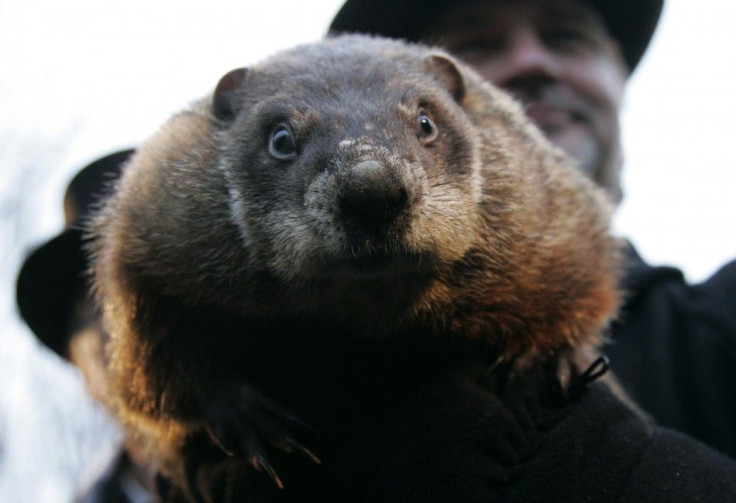Punxsutawney Phil’s Groundhog Day: The Town, History & Rodent Meteorology

Each year on Groundhog Day, Americans go bananas over the accuracy of a rodent meteorologist named Punxsutawney Phil. Cameras flashing, he takes to the stage to act out one of the nation's most absurd rituals in the small town of Punxsutawney, Pennsylvania.
Where is Punxsutawney? It's hard enough to spell, let alone find on the map. This Western Pennsylvania enclave is one of the most famous small towns in America thanks to its fury mascot, but even the town's official Web page notes that getting to Punxsutawney can be tricky:
When using an address for Punxsutawney in your GPS or on MapQuest, please use 102 West Mahoning St., Punxsutawney, PA 15767. Other addresses for Punxsutawney may incorrectly take you to a small town outside of Punxsutawney.
Nestled in the gently rolling hills of the Appalachian Plateau, Punxsutawney is approximately 90 miles northeast of Pittsburgh and 100 miles south of Erie. It's home to roughly 6,200 residents and one groundhog family: Phil, his wife, and a couple children.
Punxsutawney was originally a Native American campsite halfway between the Allegheny and Susquehanna rivers and is located on the earliest known trail to the east, the Shamokin path. The area was occupied by Shawnee, Delaware, Seneca, and Iroquois at various times throughout history.
The name Punxsutawney is derived from a Native American word for sand flies, a gnat-like inset that was abundant in the area.
The first white settlers arrived in the late 18th century and since 1887, members of the Punxsutawney Groundhog Club have held public celebrations of Groundhog Day.
The date actually has routes in science as Groundhog Day is somewhat of an astronomical holiday. It's an event that takes place in Earth's orbit around the Sun as we move between the solstices and equinoxes. In other words, it's more or less midway between the December solstice and the March equinox.
The tradition of celebrating such an event can be traced back to early Christians in Europe, when a hedgehog was said to look for his shadow on Candlemas Day.
According to an old English rhyme: If Candlemas Day be fair and bright, winter will have another flight. But if it be dark with clouds and rain, winter is gone and will not come again.
In the States, thousands of people make the trek to Gobbler's Knob to hear the 20-inch, 15-pound Punxsutawney Phil's prediction each year on Groundhog Day (Feb. 2). As the legend goes, if he sees his shadow when he emerges from his burrow, there will be six more weeks of winter weather. No shadow foretells an early spring.
The whole event is run by a group of top hatted, bowtie-wearing men known as the Groundhog Club's Inner Circle. Essentially, they're a group of local dignitaries responsible for carrying on the tradition of Groundhog Day every year. Not only are they in charge of planning each year's events, but they also feed and care for Phil himself.
The Pennsylvania town boasts other less furry attractions like the Punxsutawney Weather Discovery Center, the Theater Arts Guild, the Punxsutawney Country Club, Cloe Lake and the Mahoning Shadow Trail. And, of course, the famous 1993 Bill Murray film plays on free screens everywhere. However, Punxsutawney Phil is truly the main event.
Crowds gather at Gobbler's Knob around 3:00 a.m. around a bonfire and wait for the 7:25 a.m. prediction with bated breath.
Will the winter continue or will spring come early? Only Punxsutawney Phil knows.
© Copyright IBTimes 2024. All rights reserved.






















